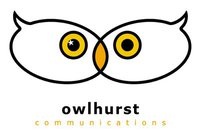 Gareth Grant, Business Unit Manager, The MediaShop
Gareth Grant, Business Unit Manager, The MediaShop

At the end of last year, my wife travelled to New York City for business. In my boredom, I was left aimlessly Googling interesting facts about the city. Did you know for instance, that over 120 years ago five boroughs (Brooklyn, Queens, Manhattan, The Bronx and Staten Island) were consolidated to create the city of New York? Some of these boroughs are islands, like Manhattan and are connected to others by bridges. There are also over 2,000 bridges in New York City with 21 major bridges connecting Manhattan. This was quite interesting to me and piqued my curiosity about bridges – clearly my boredom had hit rock bottom while my wife was away. These thoughts also made me realise the similarities between these giant structures and good business relationships.
I’ve never really given much thought about bridges and the engineering behind them and yet we use them quite often in everyday life. These icons were built to span a physical obstacle in order to provide easy passage and just like linking Manhattan to the rest of New York City – bridges enable connection.
While planning for 2020, the topic of connection is very top of mind for me. No doubt about it, 2019 was a tough year with the state of our economy, load-shedding and the likes and 2020 has arrived with its own challenges. Constant alignment on plans and objectives will be key to succeed in business, and I really want to focus on making sure I am connected with my colleagues, clients, partners and the industry.
Bridges come in all shapes and sizes, just like relationships, but what they all have in common is the engineering aspects that keep them up. Firstly, they have to be built on good, solid foundations on both sides in order to have structural rigidity and withstand some of Mother Nature’s “temper tantrums”. Without solid foundations it would be difficult to construct the centre of the bridge and it would crumble. The same is true for relationships. Both sides need solid structures in place in resources, communication and processes.
Secondly, to keep the bridge in place and prevent collapse, there are several important forces that bridges must withstand. Two of the most important forces are compression and tension. These forces provide the push and pull required to keep these engineering phenomenons standing. Similarly with relationships we need to withstand some forces. There will be times where there is tension, but tension can be good if it’s constructive. After all, tension is part of keeping the bridge up. There will also be times when clients and agency partners push each other. This push is often uncomfortable, but it is in the uncomfortable situations where we grow. So if we wish to grow, be and do better in 2020, then let’s have these two forces at play.
Thirdly, a solid bridge or relationship needs to be able to withstand unforeseen forces, like extreme weather conditions, unexpected events, accidents, and unplanned changes in the industry or economy, which can all create additional stress, but when relationships (and bridges) are built on solid foundations, these can be overcome.
And finally, relationships, just like bridges will require “maintenance” in order to keep it in good standing so that both parties prosper and have a mutually beneficial year. Inspectors and engineers look for signs that indicate when a bridge is stressed and damaged. Similarly in a business relationship, communication is critical to indicate to each other when we are strained.
Personally, I look forward to what 2020 has in store for my relationships and I look forward to the gains, strength and growth that come with the uncomfortable push and pull. We may find ourselves doing things we had never thought of, and unlocking huge opportunities in the process.
I also look forward to the maintenance of my existing relationships as much as I look forward to building some solid new ones.
So let 2020 be the year where we remain strong in tense times and where we drive connection and build bridges.

 Cupid has requested delicious food and intimate settings this Valentine’s Day and Emerald Resort & Casino is delivering. Dress to impress and fall in love with each other all over again while enjoying superb three and four course menus at Breeze and High Stakes.
Cupid has requested delicious food and intimate settings this Valentine’s Day and Emerald Resort & Casino is delivering. Dress to impress and fall in love with each other all over again while enjoying superb three and four course menus at Breeze and High Stakes. “We can always help create a lasting impression on the most romantic day of the year,” says Tanuja Gangabishun, Marketing Executive at Emerald Resort & Casino. “While our restaurants have created superb menus, the Resort is completely geared to ensure that couples, lovers, spouses, boyfriends and girlfriends have the most starry-eyed day on 14 February.”
“We can always help create a lasting impression on the most romantic day of the year,” says Tanuja Gangabishun, Marketing Executive at Emerald Resort & Casino. “While our restaurants have created superb menus, the Resort is completely geared to ensure that couples, lovers, spouses, boyfriends and girlfriends have the most starry-eyed day on 14 February.” Richard Lord, Media & Operations Director, Meta Media discusses.
Richard Lord, Media & Operations Director, Meta Media discusses.
 It’s clear that social media has become an integral part of people’s lives, forming a large part of their daily routine. So how are we, as marketers and businesses, connecting with our target audiences in 2020, given that there is an already large flock to social platforms?
It’s clear that social media has become an integral part of people’s lives, forming a large part of their daily routine. So how are we, as marketers and businesses, connecting with our target audiences in 2020, given that there is an already large flock to social platforms?